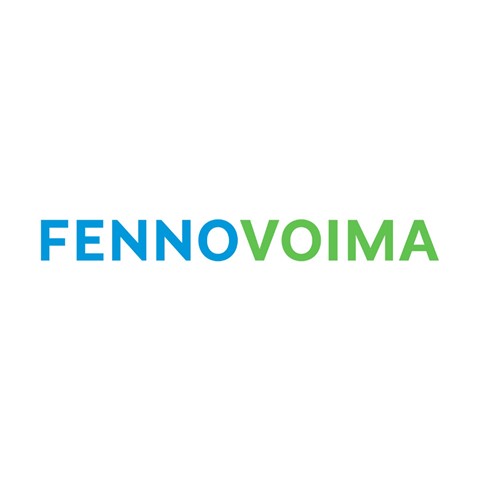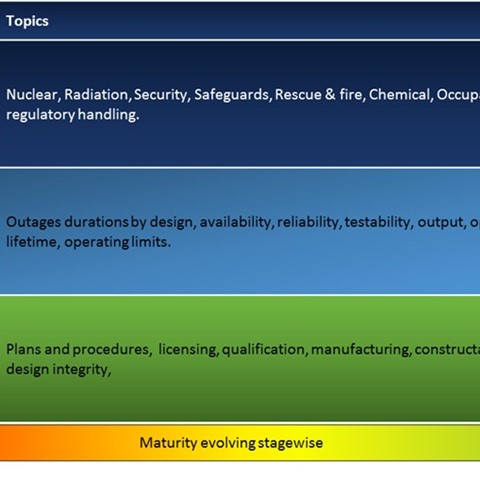We make use of cookies. When you click on agreed you are giving us your permission to do so. Please read our cookie statement for more information.
Nuclear new build project
Owner’s design acceptance approach in a nuclear new build project
26 April 2021
Fennovoima as a Company
Fennovoima is a Finnish company established for one purpose, i.e. to build and operate a nuclear power plant. Fennovoima is owned by Voimaosakeyhtiö SF (66 %) and RAOS Voima (34 %). Fennovoima was originated by Voimaosakeyhtiö SF, which is a cooperative of Finnish power and industrial companies. RAOS Voima is the Finnish subsidiary of the Russian state nuclear corporation Rosatom, which is also the plant supplier.
Fennovoima will build a new VVER-1200 (AES-2006) plant to a greenfield site in Pyhäjoki in Finland. Fennovoima will operate the Hanhikivi 1 power plant according to the so called Mankala-principle, which means that Fennovoima will produce the electricity to its owners at cost price in proportion to their ownership.
The plant’s supply contract was signed in the end of the 2013. Currently, the Hanhikivi 1 project is in the preparation phase, including basic design development and licensing, construction of infrastructure and auxiliary buildings at the project site and preparation of long lead item manufacturing.

Initial Challenges in Design Development
The approach for completion and demonstration of compliance of the plant design with the Finnish regulation and Fennovoima’s requirements has been revised several times in the project and that has been one contributor to delays in the project.
It has been challenging to divide the design into meaningful entities that would enable progress with, but would not be overly complicated to finalize. Clear hierarchy and prioritization are needed but iteration should also be minimized. In addition, a challenging aspect has been to find the balance between the finalization of the quality management plans for design and actual progress with design development. How far ahead and to which level of detail do you need to fix the plans prior to starting the execution? Planning ahead clearly minimizes risks but practical constraints, such as contracting of partners, can also delay planning. The regulations stipulate an idealistic approach with fully completed plans prior to the start of work, which has proven to be practically impossible. For example, setting a requirement that the design needs to withstand hazards does not comfort when the analyses show that there are improvements needed in unforeseen areas. A typical example of this could be the spreading of power surges or spurious signals caused by earthquakes and fires.
Reprogramming the Approach
Since the beginning of the year 2019, a renewed stagewise approach for the design has been implemented in the project, which has enabled progress both in design and licensing as well as site works. The priorities and hierarchy were set based on the magnitude influence to the design and the needs arising from the project development point-of-view.
The prioritization also covered the quality management planning, but keeping in mind that end of lifecycle activities (e.g. testing) that influence the design. At the same time Fennovoima initiated a program to systematically evaluate the conceptual design of the Hanhikivi 1 plant. This evaluation was conducted proactively prior to official submission of the corresponding design, based on the information received during the project. The evaluation covered e.g. functional defense-in-depth, structural defense-in-depth, material selections and chemistry, transient behavior, hazard protection, radiation safety and outage durations.
The evaluation resulted in around 200 open plant level questions, which were thus readily available when the actual basic design deliveries restarted in summer 2019 with the reprogrammed approach.
Basic Design Reviews
For the basic design review and acceptance Fennovoima has derived criteria, which are used by the review teams to conclude the acceptability of the particular system or building under review. Altogether 56 criteria (24 for the systems and 32 for the layout and building design) comprise the essentials to be checked in the reviews. The criteria evolve stagewise, i.e. in earlier stages a lower level of maturity of the criteria can be acceptable.
Plant Stage Review
The basic design criteria and corresponding dashboards provide us the status of individual systems or buildings, and creates utmost clarity in potential areas of further development. However, by evaluation of systems one by one, we do not get a picture of the plant as a whole. The overall picture of topics like safety (both nuclear and conventional), plant economics and feasibility for construction will still be foggy. These transversal themes are handled in plant stage review, which is prepared in parallel with the basic design review, in order to save time, and is concluded when the systems and buildings are on an adequate level. Fennovoima has divided the plant stage review into three areas: Plant Safety, Operational Design and Design for Realization (depicted in the figure on the right). These transversal topics are also associated with criteria and their maturity evolves from stage to stage. The transversal topics are directly derived from the value drivers of the Hanhikivi 1 project, i.e. safety, availability, plant output, plant lifetime, operating expenditures, project schedule and capital expenditures.
The new approach for a stagewise design has resulted in controlled and steady progress in the design development. Also, the owner’s review approach ensures determined steps towards a final approval of the basic design, reduces change needs later but will support Fennovoima's work with a framework for evaluation of design change needs that will inevitably occur.


Janne Liuko
Utility operations director at Fennovoima
Janne Liuko is leading the Utility Operations organization including Nuclear Safety, Engineering, Inspection and Supervision, and Operation and Maintenance -departments, as well as the Operational Management Team and the Design Authority.
